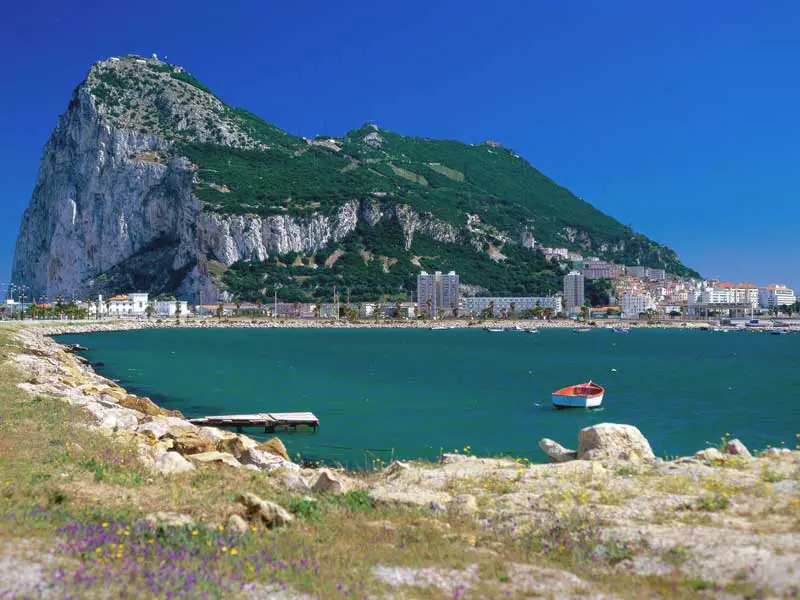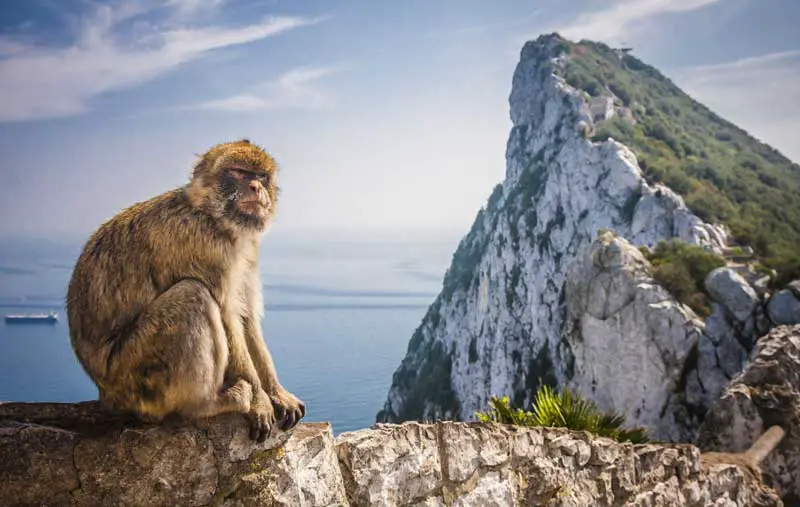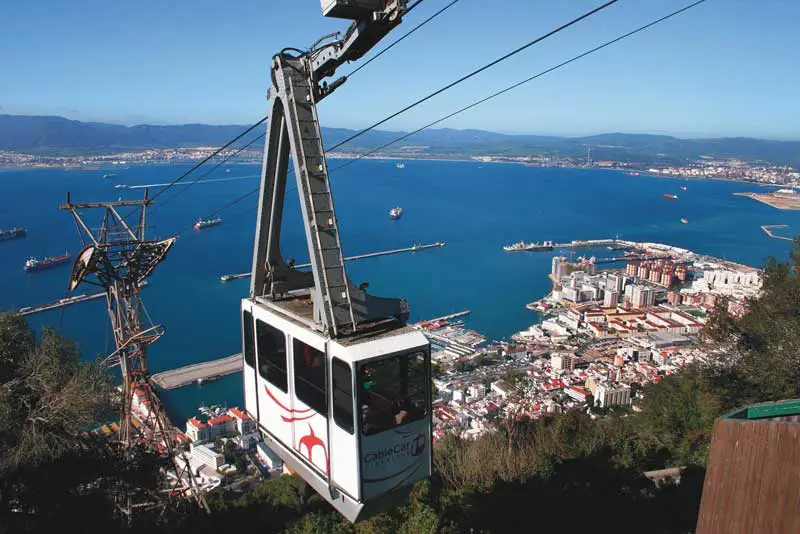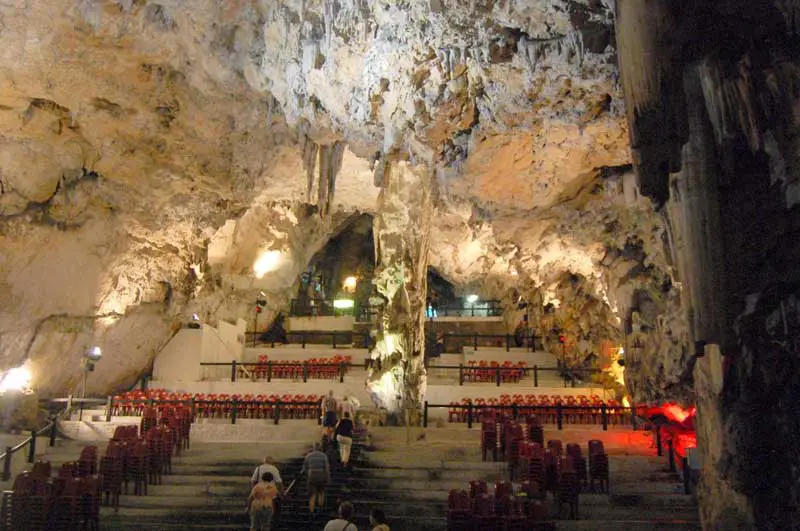Gibraltar
Gibraltar may well be a British Crown Colony but geographically it’s
an isthmus of Spain (you can walk across the road, though you do have
to pass by some pretty tough customs guards). This proximity over the
years has caused no end of irritation on the part of the Spanish
government. In fact, during his reign, Ferdinand Franco (who served as
dictatorial prime minister until the 1970s) was so upset by England’s
refusal to cede the territory to Spain that he closed the border and
cut off telephone communications. There is an ongoing, off-and-on
quarrel between Britain and Spain about who owns Gibraltar. The Spanish
believe that because it’s attached to Spain, it should belong to Spain.
But the locals have voted twice to stay with Britain. As far as they
are concerned, they are British and do not want Spanish citizenship.
Spain is to press for joint sovereignty of Gibraltar following Brexit
vote.
Over time, populated by Phoenicians, Greeks, Carthaginians, Romans,
Muslims, Moors, Spanish, Dutch and finally the British, the town of
Gibraltar was formed in the 11th century by North African Islamics. The
city is said to be “British Colonial built on Spanish Colonial built on
Moorish.” And that is exactly what the charming city resembles, with
all of the influences present in its architecture.
Owing its current status to Lord Nelson (who protected it during the
Great Siege in the late 1700s), there are several monuments honoring
the admiral, and museum exhibits explain the most recent history of the
region. The strategic location of the territory has caused it to be
used over the centuries as a fortified battlement, and in fact, the
Rock itself has over 50 km of roads within it.
The Rock of Gibraltar, that famous promontory in the Bay of Gibraltar,
actually faces Spain and not the Strait of Gibraltar leading into the
Mediterranean. Once any cloud cover clears, and the entire enormity of
it is revealed, though, it’s an amazing sight visible from the cruise
ship docks. The 430 metre high Rock is a limestone formation, riddled
with as many as 140 caves. Remains of pre-Neanderthal humans have been
found inside the rock and in areas surrounding it, but the territory’s
more recent history is both turbulent and inspiring.
Ships dock at Gibraltar’s cruise ship terminal a few kilometres from
the centre of town. Shuttles at the cruise dock accept U.S. dollars.
Gibraltar is a VAT free jurisdiction. The cruise ship terminal is small
but offers international telephones, a snack outlet and a couple of
touristy/trinkety kiosks for souvenirs. There are counters for taxis
and tourist information.
Currency is the British pound, though banks issue their own notes
and coins. British pounds are accepted everywhere, and euros are
accepted almost everywhere. For updated currency-conversion figures,
visit www.oanda.com or www.xe.com. Ask for change in British pounds
because it is hard to exchange Gibraltar currency outside the
territory. ATMs dispense either British pounds or Gibraltar pounds. A
Gibraltar 5 pence coin makes an unusual souvenir because it has a
monkey on it.
English is the official language in Gibraltar, but most locals also
speak Spanish. Other languages are Berber, Arabic and Hindi because of
the varied ethnic groups who live here. Hebrew is spoken by the Jewish
community, and Maltese is spoken by some families. Locals sometimes
speak Llanito, unique to Gibraltar and based on Andalusian Spanish.
Gibraltar is not large, so you theoretically could do everything on
foot, but it’s impractical because of the vertical geography of the
Rock. The town center is just a mile from the dock and is a relatively
easy stroll. Shuttles are offered by the port, but prepare to shell out
for the quick ride; they charge around three euros per person each way.
In town, taxis are readily available but fairly pricey relative to the
short distances traveled.
Public buses are an easy way to get around this small region. There are
five bus routes in Gibraltar (numbered 1 to 5), and buses run to most
areas of the territory apart from the Upper Rock. Take Route 2 from
Line Wall Road south of Casemates Square if you want to head out to
Europa Point, the bottom tip of Gibraltar. Fares are 1.50 GBP or two
euros one way or 2.25 GBP or three euros for a day pass.
If you book a shore excursion in town rather than through the ship, the
buses and guides leave from a central area near the main square.
Plan and Book:



Gibraltar: See and Do

Traveling to the top of the Rock is almost mandatory and is easily
accomplished via land tours or a quick cable car trip. At the top is a
splendid nature preserve, and along the way, you can visit with the
Barbary apes, the only free-living primates in Europe, and the Barbary
partridges. Both creatures are unique to Gibraltar.
Beyond the Rock and the handful of museums, the old town of Gibraltar
consists of a main street jammed with tiny shops and a handful of
famous British chains, such as Marks and Spencer, BHS and Dorothy
Perkins. For North Americans, however, there are few bargains because
prices are in the Gibraltar pound, which is equivalent to the British
pound sterling.

There are a wide array of stuffed monkeys available on the Rock to take
home as souvenirs, meant to capitalize on the Barbary apes that call
the region home. Never mind that the apes have no tails and most of the
stuffed animals do — they’re fun and range from teeny squeakers to
great big, fat and fluffy stuffed companions. When close to the apes
(the real ones, not the stuffed toys), do not touch or feed them –
after all they are wild animals. They are looked after by the
government, and veterinarian care is provided by the Gibraltar
Veterinary Clinic. The apes are fed a daily supply of fresh water and
vegetables, fruit and seeds as supplement to natural food resources —
leaves, olives, roots, seeds and flowers.
Gibraltar Crystal available in many of the shops in town. Items are
produced in Gibraltar and entirely handmade; you can watch them being
formed and even design your own pieces, from wine glasses to large
vases. The glass factory is located in an old army barracks in the town
square. Linens are also popular souvenirs.

Attractions and Activities
You can take the cable car from Main Street to the top of the Rock
and see both Spain in Europe and Morocco in Africa; the trip takes six
minutes to ascend the 1,000 feet to the top and runs every 10 to 15
minutes throughout the day. There is a restaurant, souvenir shop and
pub at the summit. On your way up or down, you can stop to see the
Barbary apes at “The Apes’ Den,” near the middle cable car station.
Others can be seen at the top. The tailless Barbary apes will visit
with you, but beware — they love snatching purses, cameras, hats and
sunglasses. Cost is about 15 euros for the roundtrip fare, including a
stop to see the apes.
Also known as Cathedral Cave, the unique geophysical properties of
Upper St. Michael’s Cave, descending some 250 feet below the entrance,
makes it ideally acoustic, and part of it is set up as a concert venue.
These days, classical music is piped through for tourists, but the
chambers are still used for concerts, solo performances and ballets.
Entry is free with a cable car ticket.
Gibraltar is tax-free, and the shopping is lovely. There are British
stores like Marks and Spencer, Spanish stores, and some that are unique
to this multiethnic community. Linens and Spanish mantillas are
available in the main square at most reasonable prices; leather goods
and clothing can be found along the pedestrians-only main street that
winds its way to the Alameda Gardens at the foot of the Rock.

A tour of Lower St. Michael’s Cave is not for the faint of heart, nor
for the physically challenged. It requires descending several hundred
feet using ropes, pulleys, ramps cut into the stone and scary walks
across slippery and narrow pediments. At the end of it, though, you
come upon an underground lake surrounded with magnificent stalactites
and stalagmites dating from millions of years ago. There is a small
entry charge.
Several companies (and cruise ship excursions) offer tours into the Bay
of Gibraltar, where three species of dolphins (common dolphin, striped
dolphin and bottlenose dolphin) live and play. Not only are you more
than likely to come face to face with these exuberant mammals (or the
occasional whale!), but it’s also the best opportunity you have for
taking photos of the Rock itself.
Gibraltar is surrounded by more than 30 wrecks and reefs and is a
diving haven for experienced divers, but even novices can take a short
“resort course” and go out for a few hours at shallower depths. If your
ship is in port until late, night diving is also available.
Multiple bird species are found migrating through the Straits of
Gibraltar. If you are a nature lover, you will be entranced during a
bird watching outing that you will enjoy tremendously. Migrating birds
are seen almost all times of the year. Depending on when you visit, you
might see white storks, honey buzzards, short-toed eagles and various
other species of sea and land birds. And Gibraltar has its own, the
Barbary partridge, which, like the apes, can only be found there.
Design by W3layouts
